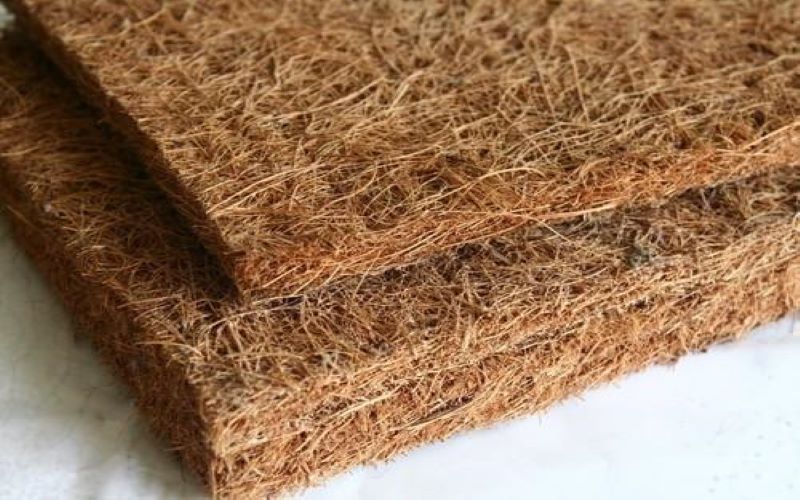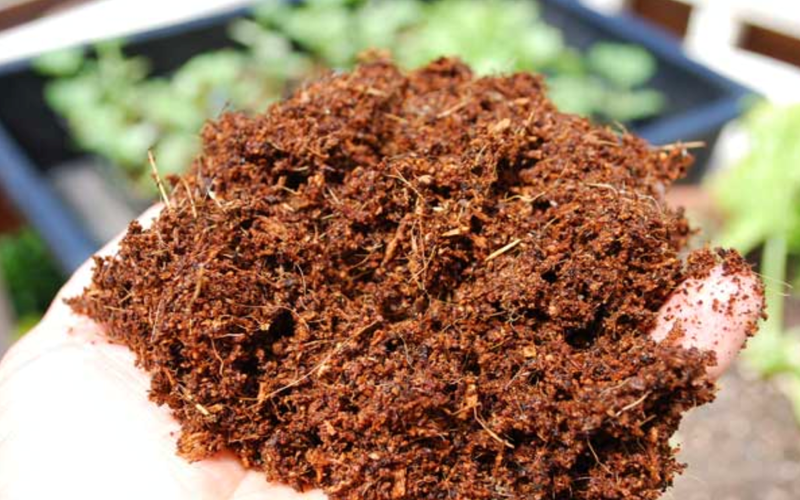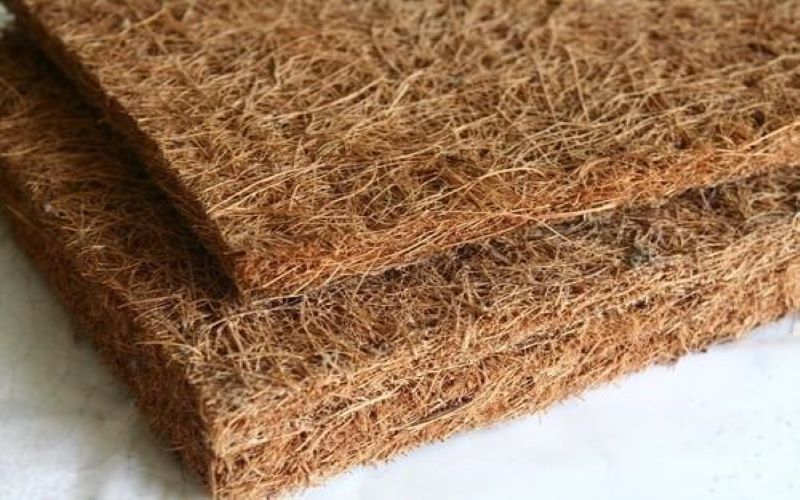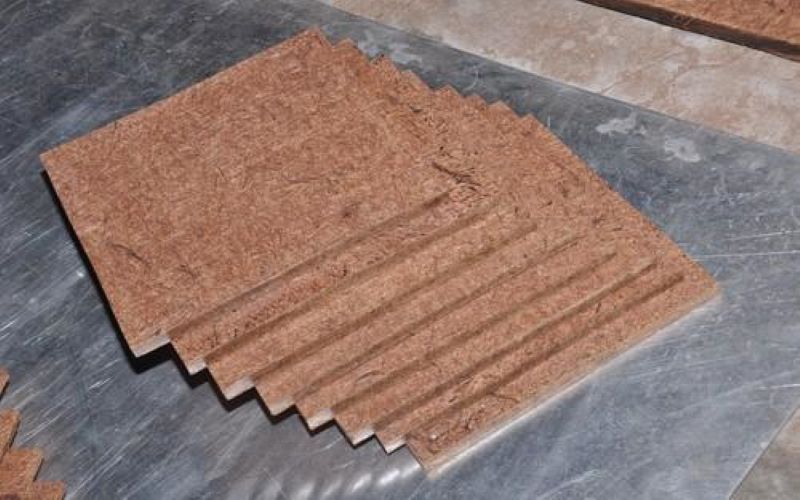About the coir composite - The properties of composite material using coir
About the coir composite – The properties of composite material using coir

Many countries are encountering the problem of environmental pollution, in which the treatment of plastic bags is a very difficult problem. Plastic bag waste when we discharge into the environment is very dangerous because it takes decades for these bags to decompose. When handling this type of waste, if we burn it at normal temperature, it will produce toxic emissions that can cause cancer to humans, while it will pollute the groundwater if you bury plastic waste underground. Therefore, people have invented the composite material using coir and plastic scraps. People can use this material to replace roofing in construction, as well as other interior and exterior applications.
About the coconut coir
What is coconut coir?
 In the past, when people harvested coconuts for their yummy meat and juice, they just considered the coconut husk as a waste product. All of the things between the coconut husk and the inner shell of the coconut was a discarded product. Until people realized that the coconut husk had many applications in gardening and home products.
In the past, when people harvested coconuts for their yummy meat and juice, they just considered the coconut husk as a waste product. All of the things between the coconut husk and the inner shell of the coconut was a discarded product. Until people realized that the coconut husk had many applications in gardening and home products.
People consider everything between the inner shell and the outer coating of the seed of the coconut as coco coir. There are 2 types of color of fibers that make up coir — the brown and white coir. Brown coir comes from mature and ripe coconuts, so it is much stronger than the white coir. In contrast, the white coir comes from pre-ripe coconuts, so it is much more flexible than the brown one. The gardeners almost use the brown coconut coir for hydroponics.
Extraction of coir from coconut husk
To get the coconut coir to use for composites, it needs to go through extensive processing. First, manufacturers need to remove the coir from the coconuts. They do this process by soaking the husks in water to loosen and soften them. They can soak the coconut husks either in tidal waters or freshwater. If we soak the husks in tidal waters, the coconut coir will take up a great amount of salt, which people have to flush out at a later stage.
Then, people will dry coir for over a year. After the extensive drying process, people arrange the coir into bales. Then, manufacturers chopp and process these bales into various formats, from chips, to “croutons”, to classic ground coco coir.
Why do people make composite material using coir?
 There is an application of fresh coconut coir and waste plastic to produce composite materials. Coco coir has many advantages that are suitable to create composite material. It has high mechanical properties and durability, as well as being difficult to decompose.
There is an application of fresh coconut coir and waste plastic to produce composite materials. Coco coir has many advantages that are suitable to create composite material. It has high mechanical properties and durability, as well as being difficult to decompose.
Therefore, people have found a way to bring scrap plastic and coir back to its life cycle. Through learning about composite materials, they have found that these 2 materials help increase the mechanical, physical, chemical and biological properties of those components. Since then, people know that the composite material using coir is very appropriate and effective.
Every year, the whole world releases hundreds of tons of plastic scrap into the environment. This amount of plastic seriously affects the environment for both the water environment and the air environment. Moreover, when we decompose plastic by heat, it continues to push out into the environment CO2 and huge emissions that can affect human health.
Besides, the demand for coconut is increasing day by day, with more than 300,000 hectares of coconut plantations. In Ben Tre, Vietnam, there are more than 70,000 hectares of coconut plantations with an output of 600 million coconuts per year. Normal coconuts can use water, meat, coconut shells, while people often discard coco coir. Therefore, the idea of collecting fresh coir to make composite appear.
The properties of composite material using coir
 Many people have analyzed the influence of different conditions on the properties of composite using coco coir. and glass fiber-reinforced polymer composites. They find that a 20-millimetre coconut fiber has the best performance characteristics.
Many people have analyzed the influence of different conditions on the properties of composite using coco coir. and glass fiber-reinforced polymer composites. They find that a 20-millimetre coconut fiber has the best performance characteristics.
Moreover, people have compared composite materials using coir and PVC wood or the polyolefin wood. They found that the influence strengths of the coco coir composites are higher than those of the PVC wood composites at the same fiber content. Besides, the coco coir acts as the reinforcing fillers which helps increase the static and dynamic moduli of the composites.
Some studies show that the chemically-treated coir-reinforced composites show good mechanical properties when compared to the untreated composites and the coir fiber composites.
The advantages of composite material using coir
The advantages of coco coir to make composite material as follows:
- The composite material using coir is very lightweight and strong.
- Due to coir composition, it can easily withstand heat.
- The coir can also withstand saline water.
- The use of coco coir can help delay the plastic shrinkage, which controls the crack development at early ages.
- Coco coir is an abundant, renewable, reasonable-price, and lignocellulosic fiber.
- The addition of coco coir will help reduce the thermal conductivity of the composite materials.
Conclusion
Tropicoco has shown you the information about composite material using coir through the article above. Coco coir has many advantages , such as natural and harmfree, so the composite made of it has many benefits over the other compositions. If you want to buy various coconut coir, as well as the other related products, please contact Tropicoco immediately.
Contact information
Tropicoco – The best substrate
Address: No.20 Ngan Long Villa, Nguyen Huu Tho street, Nha Be dist, Ho Chi Minh City
Email: giathe@tropical.vn
Hotline: +84 983230879
Open Hours: Mon-Sat: 8.00AM-5.00PM; Sunday: Closed

